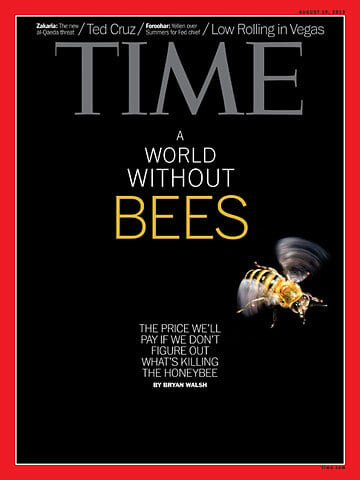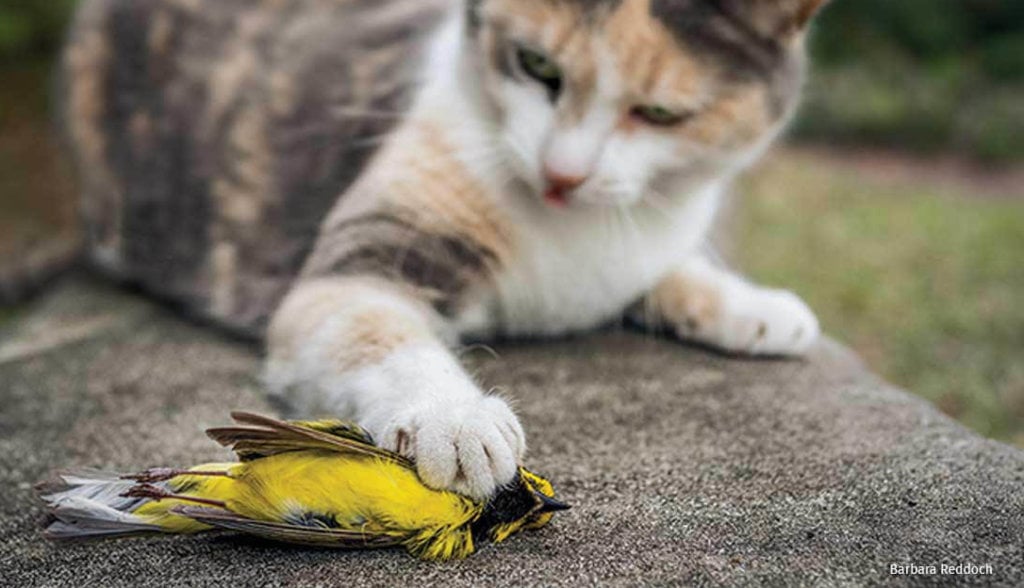An opinion writer for the New York Times, Margaret Renkl, has warned of the dark ages about to be ushered in by pesticides. She makes a case for preserving “weedy” backyards filled with blood-sucking mosquitoes and other human-threatening flying and crawling creatures of various species.
The global insect die-off is so precipitous that, if the trend continues, there will be no insects left a hundred years from now. That’s a problem for more than the bugs themselves: Insects are responsible for pollinating roughly 75 percent of all flowering plants, including one-third of the human world’s food supply.
Insect Armageddon, another popular phrase, is now one of the most common tropes in science journalism. As I’ve chronicled numerous times in recent years, (including here, here and here), many journalists have echoed claims by environmental activists advancing a succession of insect- and animal-related environmental apocalypse scenarios over the last decade—first honeybees, then wild bees and more recently birds. In each case they fingered modern, intensive farming, particularly crop biotechnology and pesticides, as the culprit, and warned of the terrible consequences in store for the Earth, including the mass extinction of pollinators and the global famine that would surely follow. In each case, small or poorly executed studies predicting imminent catastrophes were ballyhooed by many in the media; in each case, as more research came to light, the hyped claims were eventually retracted or dramatically readjusted.
More recently the spotlight has been turned on insects, the result of a handful of studies that vaulted the issue into global prominence. Is this claim, the plight of insects, an example in which the journalists got it right? We should all be frightened…if there are even a few ounces of truth to the common wisdom presented in the Times’ essay.
Fortunately for planet Earth, Ms. Renkl and the New York Times, again, got it very wrong.
You may not have noticed, as the mainstream news mostly ignored the report, but we finally have comprehensive, competent, non-ideological research to help us assess what up till now has mostly been speculative scenarios and agenda-inspired hyperbole disguised as research. A study by German researchers published in Science in April is now widely accepted—among experts—as the largest and most definitive study to date on the “Insect Apocalypse” scenario.
Researchers at the German Centre for Integrative Biodiversity Research, Leipzig University and Martin Luther University led by first author Dr. Roel van Klink analyzed almost a century’s worth of data from 166 long-term insect surveys in various parts of the world. While the far-reaching study has certain limitations (which I will address farther on), it needs to be reckoned with by anyone seriously concerned about the ecological future. A short list of the topline findings:
- Overall, terrestrial insects are declining much less rapidly (3 to 6 fold less) than other recent high-profile studies had suggested, and even this likely overstates the trend. Freshwater insect populations are actually increasing.
- “Crop cover,” which means things like corn, soybeans, sorghum, cotton, spring and winter wheat, alfalfa and hay, is associated with increases in insect populations.
- There is no association between insect population trends and global warming.
- The only clear association with insect declines is with urbanization, likely caused by habitat destruction, light pollution and waste pollution.
I will unpack each of these findings in a moment, but to understand why they’re so explosive it’s important to briefly review the origins of the various ‘sky is falling’ narratives and why journalists, and even some scientists, consistently get it wrong.
The Bee Apocalypse: The origin story

The narrative kicked off in the mid-2000s with reports of large-scale die offs of honeybees and the once-in-a-generation eruption of Colony Collapse Disease (CCD), concentrated mostly in California, that saw adult honeybees mysteriously disappear from hives. This was all very scary, and still eludes a full explanation other than that similar incidents have been documented over hundreds of years.
But the apocalypse narrative ran up against abundant evidence of rising or stable populations of honeybees over the last 25 years, except for a slight dip due to CCD in 2006-7. Honeybees are basically livestock, and governments around the world keep close tabs on the number of hives in each country. Those numbers have been rising on every habitable continent in the world since the mid-1990s, and globally have reached record numbers. After hyping a catastrophe for years in fundraising Buzz Kill scare-a-grams, even the Sierra Club finally admitted in 2018 that
…honeybees are at no risk of dying off. … The total number of managed honeybees worldwide has risen 45% over the last half century.
Next came claims of a wild bee catastrophe. There are thousands of known species and thousands more we don’t know about. Most are solitary, meaning they don’t form hives. They tend to be very small and they often live in holes in the ground. In sum, they’re hard to count. That didn’t stop a series of dire predictions, including from the Sierra Club as it shamelessly Gish galloped from honeybees to wild bees. The problem for the activists was that the very nature of wild bees means there is almost no data to support their claims. And the species that pollinate crops, and so come into most frequent contact with pesticides, are thriving.
The bird apocalypse never really took flight. After some questionable studies, it soon became clear that earlier bird declines leveled off and even reversed  in the 1990s. Besides, the real killer of birds is cats, both feral and domestic, that are estimated to slaughter between 1.3 billion and 4 billion birds annually in the United States alone. Proposing a ban on cats, however, is bound to be unpopular. It wasn’t until the insect apocalypse that doomsayers found a way to get around the problem that the data did not support various ‘imminent collapse’ predictions.
in the 1990s. Besides, the real killer of birds is cats, both feral and domestic, that are estimated to slaughter between 1.3 billion and 4 billion birds annually in the United States alone. Proposing a ban on cats, however, is bound to be unpopular. It wasn’t until the insect apocalypse that doomsayers found a way to get around the problem that the data did not support various ‘imminent collapse’ predictions.
If counting wild bees is well-nigh impossible, getting anything like an accurate gauge on insects is orders of magnitude harder. Estimates of the number of insect species range between 2 million and 30 million. Even in the US, which along with Europe is one of the most studied regions in the world, we’ve only named a little more than half the species thought to exist. Under these circumstances, studies could advance the most extravagant claims—or better yet, make scary predictions—with little fear of being tripped up again by facts. There were numerous studies of insects, of course, but very little systematic work on overall trends.
Endangered insects
The insect decline story first got traction in 2017 with the publication of a study by Hallman and Goulson that purported to find that flying insects had declined 76% over 26 years in certain nature parks in Germany. The Guardian, among those first on the Armageddon bandwagon for honeybees and wild bees, was the loudest in trumpeting the news: “Warning of ‘ecological Armageddon’ after dramatic plunge in insect numbers,” it headlined, explaining in the subhead that this could have “serious implications for all life on earth.”

The story was misreported.
The study’s methodology was seriously flawed. In many cases, the researchers didn’t sample the same sites in subsequent years, making the supposed trends meaningless. They also used the wrong sampling methods, large tent-like structures known as “malaise traps,” to capture the insects. As Oxford Zoologists Clive Hambler and Peter Henderson have pointed out in relation to other studies, malaise traps only capture flying insects when they are flying, and whether this happens is highly dependent on other variables, especially weather and climate.

Goulson, a controversial researcher, used this flawed data as a springboard to launch an attack on conventional agriculture, particularly pesticides. Goulson is a familiar figure to anyone who has followed the debate over neonicotinoid pesticides and bees, notorious for the stridency of his anti-pesticide campaigning and willingness to produce made-to-order, science-for hire research for activist groups. Despite the fact that the samples were taken in nature reserves, the purported decline was clearly due to modern farming practices, he explained to the Guardian.
Goulson said a likely explanation could be that the flying insects perish when they leave the nature reserves. “Farmland has very little to offer for any wild creature,” he said. “But exactly what is causing their death is open to debate. It could be simply that there is no food for them, or it could be, more specifically, exposure to chemical pesticides, or a combination of the two.”

It’s important to point out that this was merely conjecture on Goulson’s part. The study wasn’t designed in any way to determine the cause of insect declines, if in fact they were happening. And there was no data, flawed or not, to support the claims he made with such assurance.
History repeats itself—as farce
The insect crisis study by Casper Hallman and Dave Goulson made major waves. According to the website Almetric, it was the sixth-most-discussed scientific paper of 2017, and an inspiration for many thousands of media stories and blog posts. But the crisis claims, sketchy as they were, were just foreplay for a 2018 study that again shook the journalistic rafters.
Francisco Sanchez-Bayo, like Goulson known for his anti-pesticide activism, produced a meta-analysis of global insect population trends that had even the Guardian searching for catastrophic verbs. Clearly in need of a thesaurus to find a synonym for “plunge” featured in the Goulson-Hallman report, the paper headlined their story: “Plummeting insect numbers ‘threaten collapse of nature.’”
Other news organizations didn’t share the Guardian’s enthusiasm, as I detailed in an article for the Genetic Literacy Project. One issue was the lack of geographic representation for almost every part of the world except Europe and North America (a problem shared by the recent German study just out in Science.). But the key blunder reeked of ideological manipulation: the authors eliminated any studies finding stability or increases in insect populations by limiting their search to papers with “decline” in the title. Surprise: The analysis found declines!
Sánchez-Bayo made clear that his goal was far more than studying insects; it was to make the world safe for organic farming: “The world must change the way it produces food,” he told the Guardian. “Industrial-scale, intensive agriculture is the one that is killing the ecosystems.” He laid particular blame on a class of insecticides known as neonicotinoids, under fire by some environmentalists who claim they “sterilize the soil.”

The meta-analysis, however, did not focus on farming. A small number of the studies did have some relation to agriculture. Inconveniently for Sánchez-Bayo, those studies didn’t support his thesis. As I detail in my analysis, he confused one study’s speculation that pesticides might be the cause of bumblebee declines with the actual findings of the study, which didn’t examine causes; and in another case he claimed that a study on bats (which eat insects) found they were less abundant on conventional farms, when in fact the study had found the opposite.
Even the BBC was skeptical of how he massaged the data, which didn’t faze the author:
BBC: We put these criticisms to Dr. Francisco Sánchez-Bayo. But he says that even if they don’t have the data to prove that claim statistically, that doesn’t mean they shouldn’t make the claim.
Dr. Francisco: So therefore, even if we don’t have enough data to prove it statistical or whatever, we know that this is happening. So, it’s better to do it now, than not 10 years later when we may have a more serious problem. Yeah. We think the world’s insects could be wiped out in a century from now.
Yeah, statistical, whatever.
In early 2019, another German group of researchers, headed by Sebastian Seibold in Munich, attempted to rectify some of the problems with Hallman’s research, but as Hambler and Henderson pointed out in a critique the study, “The evidence for a recent decline in arthropod abundance in Germany is not yet robust.” The short number of years sampled vitiated any reliable extrapolation to more meaningful trends. The study authors did not account for changes in weather or climate trends.
And the way they collected data on insect densities—using sweep netting for grasslands and flight interceptors for forests—rendered the conclusions suspect at best. Both methods measure insect activity not population size. In the case of sweep netting, which is dragged across the tops of vegetation, the results can be highly variable depending upon the height and density of the plant growth, as arthropods will naturally seek cover closer to the ground. In other words, land with greater plant richness, variety and more natural growth could very well produce sweep netting samples with fewer insects and less variety of insects.
“Overgeneralisation from limited sampling could lead to inappropriate policy responses,” Hambler and Henderson concluded.
But pushback by scientists and more diligent journalists did not make a dent in the popular myths spread so recklessly by the media. Catastrophic insect declines linked to “industrial agriculture and “wanton pesticide use” were now “facts”. By dint of sheer repetition, a new “science consensus” had been born. The campaign against modern farming and the iconization of organic agriculture were the new narrative norms.
[Editor’s note: This is part one of a two-part series on the “Insect Apocalypse”. Read part two here: Disaster interrupted: Which farming system better preserves insect populations: Organic or conventional?]
Jon Entine is the Executive Director of the Genetic Literacy Project and a life-long journalist with 20 major journalism awards. Follow him on X @JonEntine
































